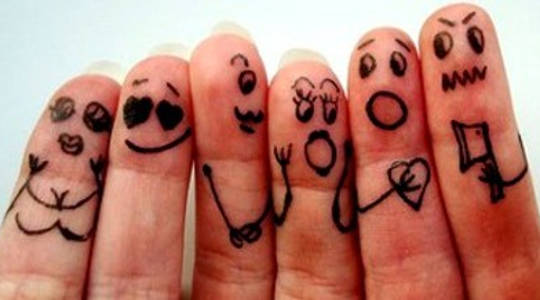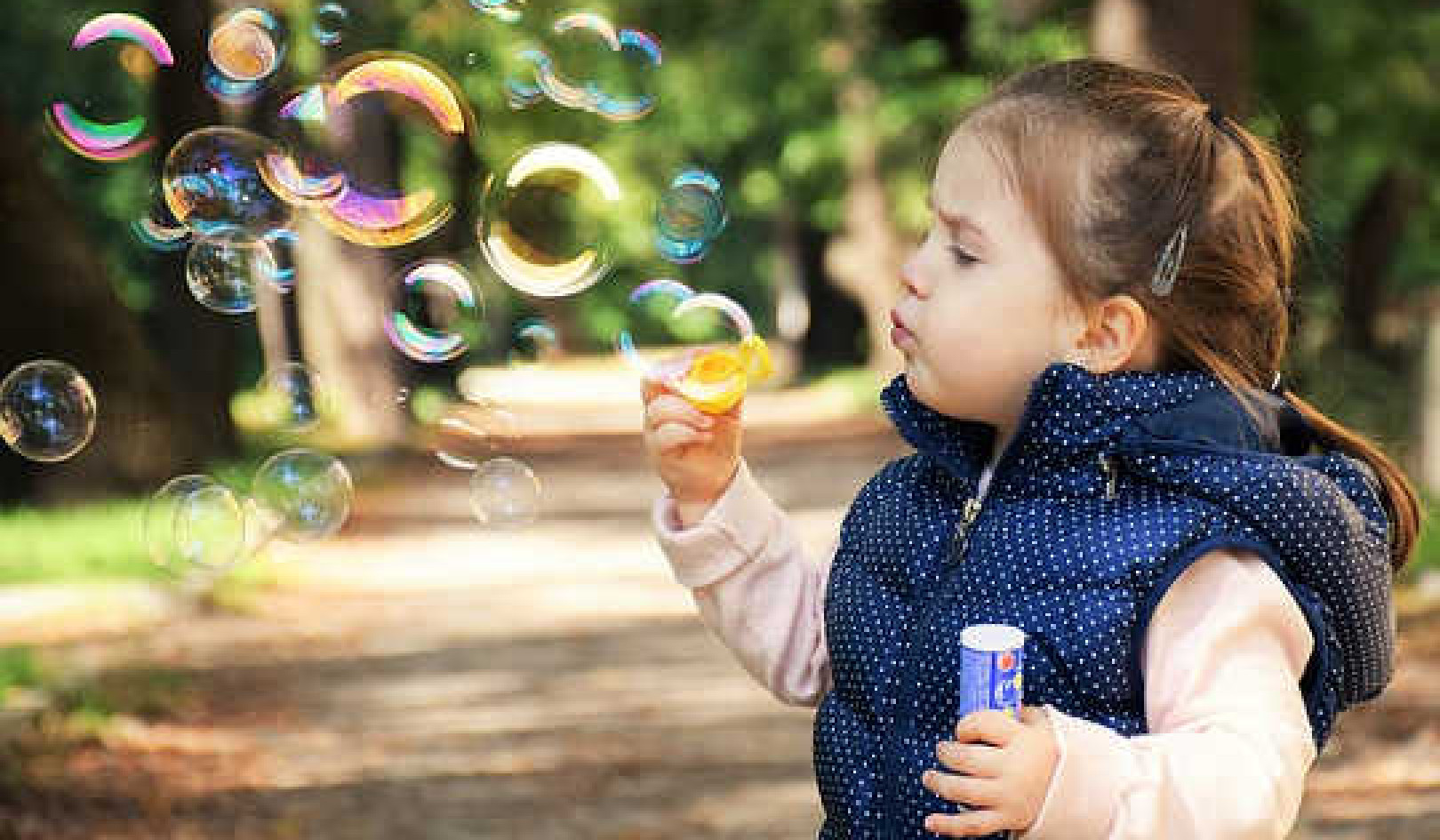
When we talk about it on paper, detaching or reducing our level of attachment to something doesn't sound so difficult, does it? If we find ourselves in an unhealthy situation, we walk away. If we fail to reach a goal, we try again. If we want to make a change, we move forward with our transformation. There is no need to complicate anything; we keep it simple, moving from one interaction to another without becoming too attached to any one outcome.
But in life it rarely happens this way. This is because we are human, not heartless robots. Our emotions rise to the surface, and we initially feel pain when we try to reduce our dependence on things outside ourselves — the things to which we are most strongly attached. So the question is, how do we deal with the emotions that arise on the path?
Emotions Are Real & Not To Be Ignored
It's important to keep in mind that our emotions are real and should not be ignored as if they don't exist or stuffed away as if they aren't valid. Emotions create the most authentic anchor we have to ourselves. The whole spectrum of emotions — fear, love, jealousy, insecurity, anger, joy—is very real. But here's the thing: What triggers those emotions may not be real.
Emotions help us communicate with each other. Without the ability to express what we are feeling and to recognize how others feel, we would be at some disadvantage. Take the example of my son, Alejandro, who is diagnosed with high-functioning autism. We are teaching him how to express his emotions so that we know what he is feeling and he can interpret what others are feeling. One of the tools we use is a teddy bear, a gift from his aunt, which shows different emotions.
We are also teaching him the words that go along with each emotion. This is the most basic use of knowledge, and it is necessary for each of us to learn this throughout our lives, as early as possible, so that we can express our sense of self and convey our needs and desires within the Dream of the Planet. Some of us, like my little girl Audrey, are really good at sharing what we are experiencing emotionally. Some of us are not as good at it yet, like Alejandro. Still, an emotion is present with or without a label, with or without a facial expression. An emotion is truth.
The Trigger for Emotions Can Be Based on Illusion or Distortion
Again, what we are experiencing is real, but what triggered the feeling could be based on an illusion or a distortion. Here is an example. I am holding my newborn son, Alejandro, in my arms, and I am filled with bliss. I am not thinking, I am simply allowing that moment to engulf me. The emotion is real; the moment is real. I have not created a story in my mind.
Then, let's say that as I'm holding him, a little thought grows in my head: What if I lose him? All of a sudden that illusion, that insecurity, that fear, has stirred in me. This little seed of fear takes hold, and as I am exposed completely to the emotion, I feel that fear of losing my son engulf me. I go from a moment of complete bliss to a moment of pure terror. The trigger was an illusion, but I still felt the emotions.
Is My Upset Based on Reality or Faulty Information?
 Our emotions — regardless of the triggers — are expression of ourselves. These are the important questions to ask: Are we aware of the triggers? Do we know if the trigger is based on reality or if it is based on faulty information? Is the trigger based on an attachment to a certain belief or expectation?
Our emotions — regardless of the triggers — are expression of ourselves. These are the important questions to ask: Are we aware of the triggers? Do we know if the trigger is based on reality or if it is based on faulty information? Is the trigger based on an attachment to a certain belief or expectation?
Whenever I'm upset, I know that something I hold to be true has been put to the test. I look at that agreement inside and out and ask myself, is it an agreement based on truth or illusion? If I am very attached to that agreement, I might end up using a lot of my energy to keep it alive. If I have to struggle that hard to give something life, it cannot be very solid, can it? If I become skeptical, I am giving myself a choice to once again believe that agreement or not.
Asking Questions and Making Choices
Uncomfortable emotions are like car alarms: they let us know there is a problem to attend to, a wound for us to work on, thus allowing us to see our own truth. Whenever an emotion gets triggered, it is the opportune moment to ask questions such as:
* What is this about?
*What agreement is at the heart of this?
*What attachment does this threaten?
*Do I really believe this?
*Is it important?
Answering these questions gives us the opportunity to examine our beliefs and choose whether or not to continue to believe.
Emotions: Tools for Transformation
We honor our emotions by realizing that they are an expression of how we feel and what we are going through. We look at what has triggered our emotions, while still allowing ourselves to simply feel.
We further honor our emotions by having the awareness that they may have been triggered by something not based on truth. Thus, we use our emotions as a tool for transformation, because they completely expose whatever agreement has been hiding beneath the surface.
I am grateful to my emotions for telling me my truth, for it is only through exposure that we regain the power to choose between "I will continue to agree" and "I am ready to let go."
*Subtitles by InnerSelf
©2013, 2015 by don Miguel Ruiz Jr. All Rights Reserved.
Reprinted with permission of the publisher, Hierophant Publishing.
Dist. by Red Wheel/Weiser, Inc. www.redwheelweiser.com
Article Source
The Five Levels of Attachment: Toltec Wisdom for the Modern World
by don Miguel Ruiz Jr.
 This is a book that picks up where The Four Agreements left off. Building on the principles found in his father's bestselling book, Miguel Jr. explores the ways in which we attach ourselves inappropriately to beliefs and the world. Accessible and practical, his exploration invites us to look at our own lives and see how an unhealthy level of attachment can keep us trapped in a psychological and spiritual fog. He then invites us to reclaim our true freedom by cultivating awareness, detaching, and discovering our true selves.
This is a book that picks up where The Four Agreements left off. Building on the principles found in his father's bestselling book, Miguel Jr. explores the ways in which we attach ourselves inappropriately to beliefs and the world. Accessible and practical, his exploration invites us to look at our own lives and see how an unhealthy level of attachment can keep us trapped in a psychological and spiritual fog. He then invites us to reclaim our true freedom by cultivating awareness, detaching, and discovering our true selves.
Click here for more info or to order this book on Amazon.
About the Author
 don Miguel Ruiz, Jr., is a Nagual, or a Toltec Master of Transformation. He is a direct descendant of the Toltecs of the Eagle Night lineage, and is the son of don Miguel Ruiz, Sr., author of The Four Agreements. At the age of 14, don Miguel Jr. apprenticed to his father and his grandmother, Madre Sarita. His apprenticeship lasted 10 years. For the past six years, don Miguel Jr. has applied the lessons learned from his father and grandmother to define and enjoy his own personal freedom while achieving peace with all of creation. As a Nagual, he now helps others discover optimal physical and spiritual health, so that they may achieve their own personal freedom.
don Miguel Ruiz, Jr., is a Nagual, or a Toltec Master of Transformation. He is a direct descendant of the Toltecs of the Eagle Night lineage, and is the son of don Miguel Ruiz, Sr., author of The Four Agreements. At the age of 14, don Miguel Jr. apprenticed to his father and his grandmother, Madre Sarita. His apprenticeship lasted 10 years. For the past six years, don Miguel Jr. has applied the lessons learned from his father and grandmother to define and enjoy his own personal freedom while achieving peace with all of creation. As a Nagual, he now helps others discover optimal physical and spiritual health, so that they may achieve their own personal freedom.



























